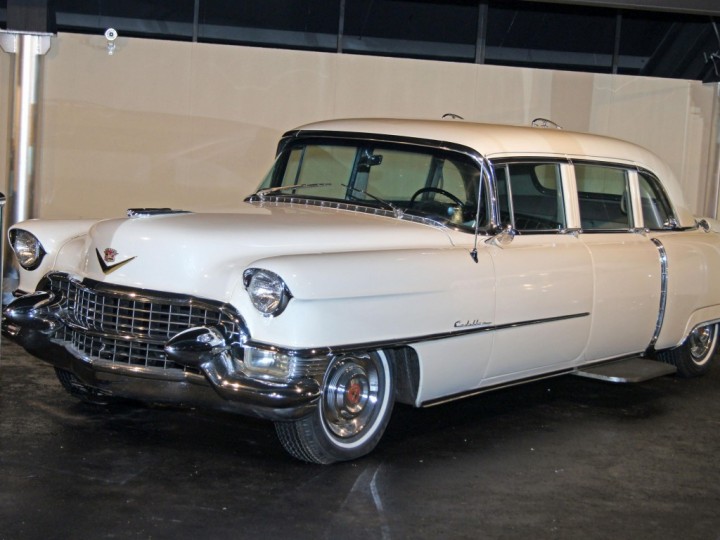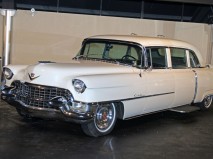1955 Cadillac Fleetwood Seventy-Five
en.wikipedia.org
Fifth generation
Model years - 1954–1956
Assembly- Detroit, Michigan, USA
Body style - 4-door sedan, 4-door limousine
Layout-FR layout
Platform- D-body
Engine- 331 cu in (5.4 L) OHV V8, 365 cu in (6.0 L) OHV V8
Transmission -3-speed synchromesh manual , 4-speed Hydramatic automatic
Wheelbase - 149.8 in (3,805 mm)
Length - 1954–55: 237.1 in (6,022 mm)
1956: 235.7 in (5,987 mm)
Width - 1954: 79.6 in (2,022 mm)
1955: 79.8 in (2,027 mm)
1955: 80.1 in (2,035 mm)
Height - 66.2 in (1,681 mm)
Curb weight - 5,200–5,300 lb (2,400–2,400 kg)
Designer(s) - Harley Earl
The big Series 75 "high-headroom" car came as an eight-passenger limousine with driver's partition or eight-passenger sedan without partition, both having jump seats. The Series 75 included a lower sleeker appearing body, a new cellular grille insert, and inverted gull wing front bumpers and tapered dagmar style bumper guards. Round jet style dual exhaust outlets were incorporated into the vertical bumper extensions and the rear bumper was entirely redesigned. An Eldorado style wraparound windshield was seen. A wide ventilator intake was now stretched across the base of the windshield and a chrome visored headlamp look was emphasized. V-shaped ornaments appeared on the hood and deck lid with Fleetwood script in the latter location. Wheelbase was up to 149.8 in (3,805 mm) for 1954, and engine output jumped to 230 hp (172 kW).
In 1955 the grille was redesigned with wider spaces between the blades and the parking lamps were repositioned beneath directly below the headlights.The trim of the Series 75 long wheelbase model was distinctive from other lines. A horizontal rub molding ran from the front parking light housings to the trailing edge of the front door and stopped. A full length vertical air slot-style fenderbreak molding was placed directly behind the rear gap of the back doors. The two moldings did not meet at right angles. A Fleetwood script appeared on the rear deck lid. The high headroom appearance was seen again. Both the sedan and the limousine continued to feature auxiliary seats for extra passenger carrying capacity and the Imperial limousine had a hydraulically operated glass driver's partition. Engine output was increased to 250 hp (186 kW). An optional dual-four barrel carb setup boasted 270 hp (201 kW). Hydramatic automatic transmission was now standard equipment.






